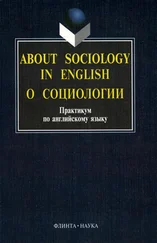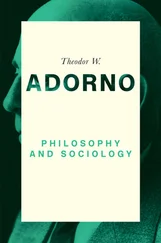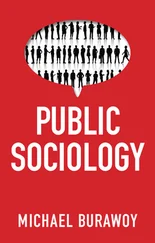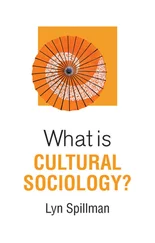Giddens’s approach begins from the recognition that people actively make and remake social structure during the course of their everyday activities. For instance, the fact that I use the monetary system contributes in a minor, yet essential way to the very existence of that system. If everyone, or even a majority of people, at some point decided not to use money, the ‘thing-like’ monetary system would collapse. A useful concept for analysing such processes is structuration (Giddens 1984). Structuration theory holds that ‘structure’ and ‘action’ are necessarily related to each other and are not opposites. Societies, communities and groups have ‘structure’ only insofar as people behave in regular and fairly predictable ways. On the other hand, ‘action’ is only possible because each individual possesses an enormous amount of socially structured knowledge which pre-exists them as individuals.
Take the example of language. To exist at all, language must be structured – that is, it must have properties which every speaker must observe. What someone says in any given context would not make sense unless it followed certain grammatical rules. Yet the structural qualities of language exist only insofar as individual language users actually follow those rules in practice. We can say that language, as with other social institutions, is constantly in the process of structuration.
Interactionists are quite right to suggest that human agents are highly knowledgeable actors. Social life demands that we follow complex sets of conventions, such as the rituals strangers observe when passing by or meeting in the street. On the other hand, as we apply that knowledge to our own actions, we give force and content to those rules and conventions on which we draw. Structuration always presumes this ‘duality of structure’ in which all social action presumes the existence of structure. But, at the same time, structure presumes action because it depends on regularities of human behaviour.
This resolution to the structure–agency problem has its critics. One issue is the relative weight afforded to structure and agency in particular settings. Despite the laudable attempt to bridge the divide, Giddens’s structuration theory does seem to put heavy emphasis on the structuring power of actors in shaping social life. Even though social structures are seen as effective, structuration theory still views human agency as capable of changing and reshaping them, however powerful or long established they may be. But the extent to which this is true cannot be decided in advance of empirical research into concrete cases.
Margaret Archer (1995, 2003) is sympathetic to structuration theory but sees Giddens’s theoretical discussion as overly descriptive. It is not enough simply to note that structure and agency are co-constitutive (that one implies the other). Sociological explanations need to establish whether structure or agency is the cause of social phenomena in particular cases. The continuous interplay of structure and agency that Giddens rightly identifies has a definite chronological sequence: existing social structure → individual actions → modified social structure, and so on. In tracing this continuous sequence in specific studies, it should be possible to discover whether structure or agency is more effective.
It seems unlikely that the structure–agency problem will ever be resolved to the satisfaction of all sociologists, especially as various perspectives and theories lie closer to one side or the other of the dilemma. Individual sociologists also lean towards structure or agency perspectives depending on their own social backgrounds and life experiences. Nonetheless, the two approaches discussed above are evidence of a desire to take some of the heat out of this longstanding problem.
Does Elias’s figurational sociology really bypass the need to bridge the divide between structure and agency? According to Giddens’s structuration theory, what exactly are social structures?
Consensus versus conflict
The second enduring dilemma is that of consensus versus conflict. For all functionalist thinkers, society is treated as an integrated whole, composed of structures or institutions which mesh closely with one another. This is very much in accord with Durkheim’s focus on the constraining, ‘external’ character of ‘social facts’. However, the analogy here is not with the walls of a building but with the physiology of the human body.
The body consists of various specialized parts, such as the brain, heart, lungs, liver, and so on, each of which contributes to sustaining the continuing life of the whole organism. These necessarily work in harmony with one another; if they do not, the life of the organism is under threat. Similarly, for a society to have a continuing existence over time, its specialized institutions, such as the political system, religion, the family and the educational system, must all work in harmony with one another. This is a consensus perspective, which focuses on how societies hold together.
Those who focus mainly on conflict have a very different outlook. Their guiding assumptions can be seen in Marx’s theory of class conflict. According to Marx, societies are divided into classes with unequal resources and, since marked inequalities exist, there are divisions of interest that are ‘built into’ the social system. These conflicts at some point break out into active social change. Since Marx, others have identified gender and ethnic divisions or political differences as sources of conflict. For conflict theorists, society inevitably contains divisions and tensions regardless of which social groups are stronger than others.
As with the case of structure and action, it is unlikely that this theoretical dispute can be resolved fully. Yet, once more, the differences between consensus and conflict standpoints may not be as wide as it appears. All societies probably have some loose, general agreement on values, and all certainly involve conflict. As a general rule, sociologists always have to examine the connections between consensus and conflict within societies. The values held by different groups and the goals that their members pursue often reflect a mixture of common and opposed interests. For instance, even in Marx’s theory of class conflict, capitalists depend on a labour force to work in their businesses, just as workers depend on capitalists to provide wages. Open conflict is not continuous because what both sides have in common overrides their differences. For this reason, Max Weber argued that the future of the working classes lay in wringing concessions from capitalism, not in trying to overthrow it.
A useful concept for analysing the interrelation of conflict and consensus is ideology – ideas, values and beliefs which help secure the position of more powerful groups at the expense of less powerful ones. Power, ideology and conflict are always closely connected. Ideological dominance can often create the appearance of consensus, as the internalization of ideological notions leads people to accept gross inequalities of opportunity, status and condition. Those who hold power may depend mainly on the influence of ideology to retain their dominance but are usually able to use force when necessary. For instance, in feudal times, aristocratic rule was supported by the idea that a minority of people were ‘born to govern’, but aristocratic rulers often resorted to violence against those who dared to oppose their power.
In recent times, the so-called Arab Spring of 2010–12 saw the apparently stable societies of the Middle East and North Africa riven with protests and demonstrations which expressed pent-up frustrations and underlying conflicts of interest. In Libya, Bahrain and Syria, when appeals to national pride and shared solidarity had failed, the governing regimes turned to military force to try to put down the protests. The example shows that neither consensus nor conflict are ‘natural’; both are outcomes of social processes.
Читать дальше












